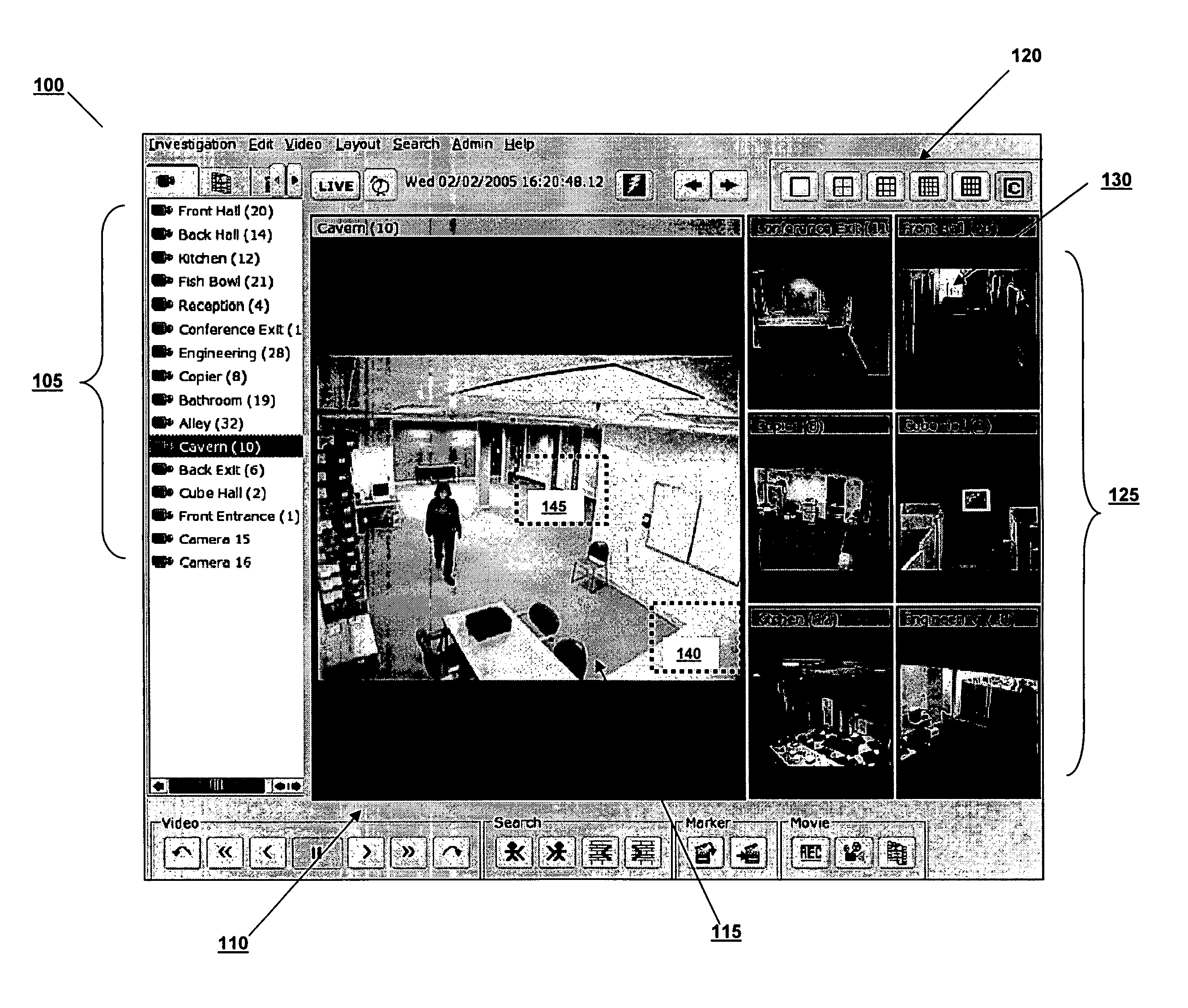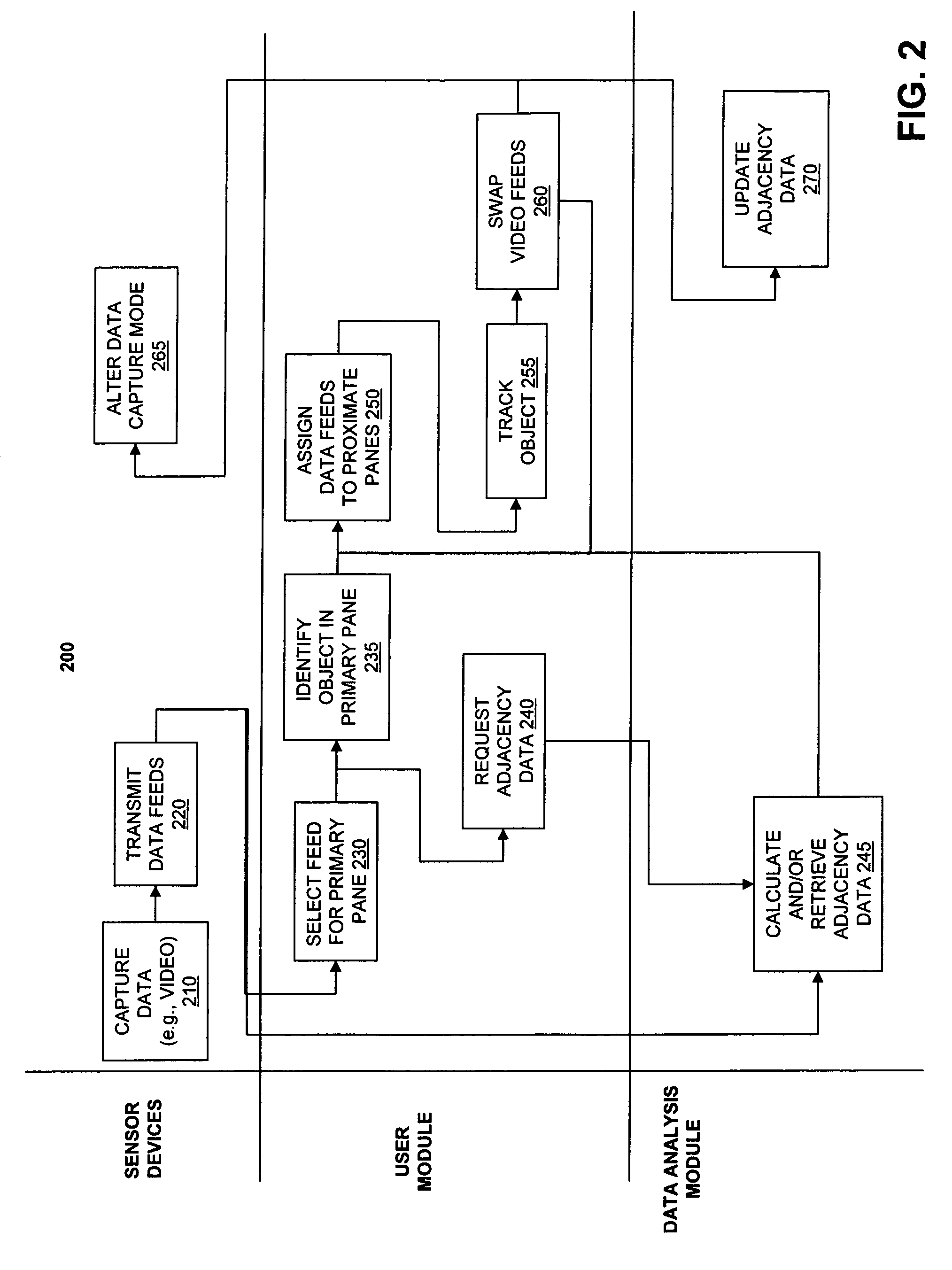Intelligent camera selection and object tracking
a camera selection and object technology, applied in the field of video surveillance computer-aided surveillance systems, can solve the problems of significant training and cost barriers, disjointed and often incomplete visual records, and single-camera tracking systems that lose track of monitored objects that leave the field of view of the camera, so as to facilitate intelligent selection and presentation, reduce or eliminate training costs, and reduce the effect of training costs
- Summary
- Abstract
- Description
- Claims
- Application Information
AI Technical Summary
Benefits of technology
Problems solved by technology
Method used
Image
Examples
Embodiment Construction
Computer Aided Tracking
[0027]Intelligent video analysis systems have many applications. In real-time applications, such a system can be used to detect a person in a restricted or hazardous area, report the theft of a high-value item, indicate the presence of a potential assailant in a parking lot, warn about liquid spillage in an aisle, locate a child separated from his or her parents, or determine if a shopper is making a fraudulent return. In forensic applications, an intelligent video analysis system can be used to search for people or events of interest or whose behavior meets certain characteristics, collect statistics about people under surveillance, detect non-compliance with corporate policies in retail establishments, retrieve images of criminals' faces, assemble a chain of evidence for prosecuting a shoplifter, or collect information about individuals' shopping habits. One important tool for accomplishing these tasks is the ability to follow a person as he traverses a surv...
PUM
 Login to View More
Login to View More Abstract
Description
Claims
Application Information
 Login to View More
Login to View More - R&D
- Intellectual Property
- Life Sciences
- Materials
- Tech Scout
- Unparalleled Data Quality
- Higher Quality Content
- 60% Fewer Hallucinations
Browse by: Latest US Patents, China's latest patents, Technical Efficacy Thesaurus, Application Domain, Technology Topic, Popular Technical Reports.
© 2025 PatSnap. All rights reserved.Legal|Privacy policy|Modern Slavery Act Transparency Statement|Sitemap|About US| Contact US: help@patsnap.com



